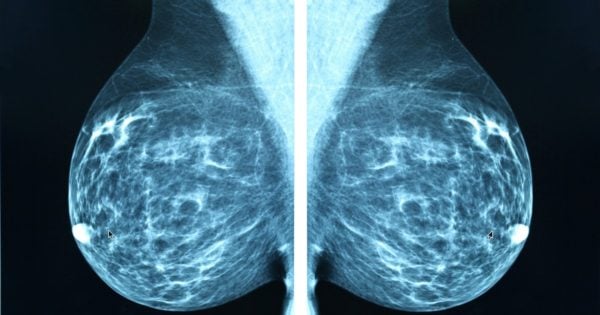With AAP
It’s a common risk factor for breast cancer – but most of us are still in the dark about breast density.
Around two-thirds of women don’t know that breast density can obscure a lump or lesion on a mammogram – making it harder for breast cancer to be detected early, a national survey commissioned by health organisation Pink Hope has found.
So what are “dense breasts” and how do you know if you’ve got them?
Basically, the denser the breast, the more white there is on the mammogram, Professor Mary Theresa Rickard, Chief Radiologist at Sydney Breast Clinic told AAP.
Listen: The women Connie Johnson kept closest speak to Mia Freedman…
“The whiter the mammogram the greater your risk of getting breast cancer,” Prof Rickard explained.
“Our chances of finding a cancer on a dense breast are not as good as they are on finding it on a fatty breast, so greater chance that your cancer will be missed if you have a dense breast.”
Unfortunately, Prof Rickard explained, high breast density is not something you can know by touching or looking at your breasts.
The the only way you can find out is if you’ve had a mammogram.
But – and here’s the problem Pink Hope wants to do something about – the radiologist performing your mammogram will not routinely tell you if you have dense breasts, unless you live in Western Australia.





























































































